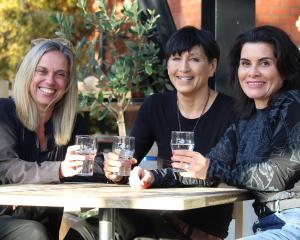
The installation of the first cardboard cladding tubes, each weighing 120kg, began yesterday morning and will shape the $5.3 million A-frame building.
A total of 320 tubes will be used.
Naylor Love project manager Stephen Lynch told Newstalk ZB it was hoped this stage of construction would take only about a month to complete.
''Any high winds at all, any kind of winds at all [and] we'd have to stop lifting ... It's programmed [for] four weeks to get all the cardboard tubes into place, but it's very weather dependent,'' he said.
Designed by leading Japanese ''emergency architect'' Shigeru Ban, the 700-seat transitional cathedral is being constructed in Latimer Square.
It will stand in for the ''deconstructed'' Christchurch Cathedral in Cathedral Square and is expected to be finished in April. While described as ''temporary'', the cathedral is being built as a permanent structure, with an expected lifespan of more than 50 years.
Over the next two weeks, scientists will be surveying several hundred Cantabrians about their experiences in the February 2011 earthquake.
Teams of scientists will scour the quake-shattered eastern suburbs of Christchurch to gather vital information to improve earthquake hazard and risk assessments in New Zealand.
Scientists from the University of Canterbury, city council and GNS Science will carry out visual inspections of the outside of selected residential properties to generate estimates of shaking intensity from the deadly quake.
Where owners or occupiers are willing, they will also complete a two-page questionnaire about the earthquake and its shaking characteristics.
Project leader Mark Stirling, of GNS Science, said the information would help in the development of mathematical equations that would convert felt shaking intensity into a ground acceleration figure, to be used by scientists and engineers for a range of hazard-related purposes.
''The information from this earthquake will contribute more to this study than any other New Zealand earthquake,'' Dr Stirling said.
Intensity is the human-felt scale of earthquake shaking, and a frequently used measure is the 12-level Modified Mercalli Intensity Scale.
The equations developed from this project will be able to be used anywhere in New Zealand to make earthquake hazard maps, which can be used in land-use planning and engineering and infrastructure development.
The project is being funded by the Earthquake Commission.






